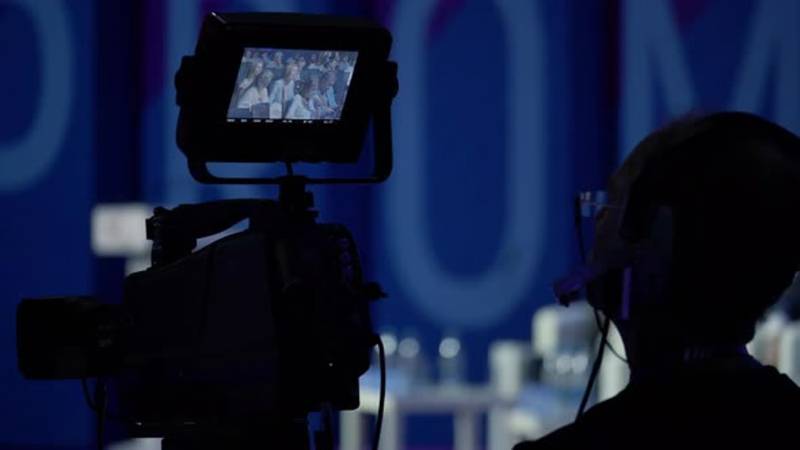
Yusuf Shaheen, in his critically acclaimed book Artificial Borders of the World, aptly argues that only the conqueror's religions and customs have prevailed, and their dominance has profoundly shaped the religion-cultural and social landscape of the world. Native customs and indigenous rituals, in contrast, have always struggled for relevance and survival. This dynamic, intertwined with capitalist marketing strategies, plays a central role in promoting religious observance as a mass consumer phenomenon worldwide. These strategies have not only turned religion into a lucrative industry but have also deeply embedded it within the psychological and socio-economic fabric of popular culture, which itself is a product of these marketing efforts. Over time, religious practices and cultural traditions have increasingly become entangled with commercial interests, resulting in the transformation of spiritual observances into global consumer events.
Take Christmas and Easter, for example. While Christmas has long been significant for obvious reasons in Christianity, it was once overshadowed by Easter in terms of cultural importance. The shift in focus toward Christmas can be traced back to Coca-Cola's marketing campaign in the United States, which redefined Santa Claus and made his red-and-white attire synonymous with the brand. This strategic move not only revolutionised the imagery surrounding Christmas but also helped transform it into a global, commercially driven holiday. By associating Santa Claus with the Coca-Cola brand, Christmas became an irresistible marketing opportunity, turning it into a consumer event characterised by gift-giving, decorations, and elaborate consumer promotions.
Similarly, Easter, originally centred on the resurrection of Christ, has become increasingly commercialised. Retailers, candy manufacturers, and toy companies have heavily promoted the Easter Bunny, chocolate eggs, and other non-religious symbols tied to the holiday. Through marketing, the idea of Easter as a time for spiritual renewal has been diminished, while the commercial elements of the holiday have been amplified, drawing families into a cycle of consumerism that now defines the season for many.
Moreover, Halloween was originally a minor celebration rooted in ancient Celtic traditions. But it has grown into a massive consumer-driven event, largely thanks to effective marketing strategies. Over the past few decades, Halloween has become a major retail event, with businesses promoting costumes, decorations, candies, and themed products. Retailers and advertisers have created a festive atmosphere where people of all ages are encouraged to participate by buying products that enhance their celebrations. From elaborate costumes to party supplies, Halloween has been transformed into a global retail occasion, shifting it from a cultural ritual into a commercial spectacle that generates billions of dollars in sales each year.
Marketing strategies tap into religious sentiments, making individuals feel as though participating in these commercialised events is a form of fulfilling their religious duties.
Marketing’s influence also extends beyond holidays to how we perceive cultural and religious figures. A prime example of this is the popular narrative surrounding the Hindu epic Ramayana. Lord Ram is widely celebrated as a hero, while Ravan is depicted as a villain. This dichotomy has been heavily influenced by commercial and cultural narratives shaped by the dominant majority. While some still worship Ravan in specific traditions, the prevailing narrative, driven by mainstream marketing and popular media, portrays him as a "devil," casting a shadow over the nuances of the mythological tale.
In this consumer-driven landscape, marketing strategies tap into religious sentiments, making individuals feel as though participating in these commercialised events is a form of fulfilling their religious duties. These strategies promise spiritual fulfillment through consumption, selling the idea that purchasing certain products — whether it’s perfumes, food, or beverages — is integral to religious devotion. The attar industry, for example, has seen tremendous growth by aligning its products with piety and spiritual connection. Similar to how Coca-Cola’s branding has become intertwined with Christmas, the sale of attars and religiously linked products has flourished, promoting the idea that these products are necessary to fully experience the spiritual essence of holidays and rituals.
Ramazan transmissions in Pakistan offer another vivid example of how consumerism and religious observance are intertwined. These television programmes — heavily sponsored by corporations — blend entertainment with product promotion. Game shows have become a central feature of Ramazan broadcasts, with millions of dollars poured in. The shows often feature prize giveaways and commercials, blurring the line between entertainment and religious observance. This commercialised content makes viewers feel as if participating in these events — whether through shopping or watching particular programmes — is necessary to complete the holy month, creating a sense of obligation tied to consumerism.
As a result, processed food and beverages have become part of Sehri and Iftar. The dieting and food patterns have dynamically changed over the last two decades, even though eating habits are typically linked with natural inhabitants, which are determined by geographical factors such as climate. With the rise of religious mass consumerism, old and traditional dishes are diminishing from the dining table. Consequently, the sale of fruit juices and drinks, as well as other processed food items, increases by 50% to 70% during Ramazan compared to the rest of the year. This trend reflects a broader cultural shift. As these religious and cultural events continue to be shaped by commercial interests, the line between spiritual practice and consumer behavior becomes increasingly blurred.
This transformation raises important questions about the nature of authenticity in religious experience, and whether the commercialisation of faith undermines its true meaning or simply reflects evolving cultural norms. What is clear, however, is that marketing has become a powerful force in redefining how religion is practiced and experienced in the modern world, turning what were once deeply personal and communal observances into highly commercialised global events.

